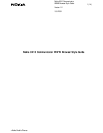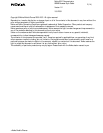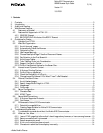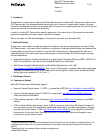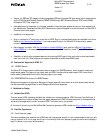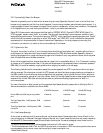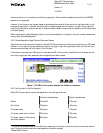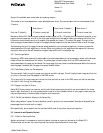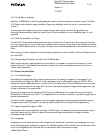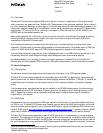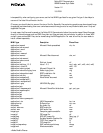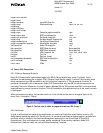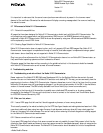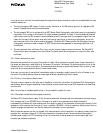
Nokia 9210 Communicator
WWW Browser Style Guide
9 (14)
Version 1.2
18/1/2001
ãNokia Mobile Phones
5.3.2 Do Not Rely on JavaScript
JavaScript, or ECMAScript, is a scripting language often used to facilitate interactive or dynamic content. The Nokia
9210 Communicator does not support JavaScript. Pages using JavaScript should not rely on it, and should work
without it.
As an example, when designing input forms, always provide a submit button and when using JavaScript for
automatical browser detection, specify a timeout that will force a redirection to a non-JavaScript page if it is not
supported.
5.3.3 Check the Availability of a Plug-In
The Nokia 9210 Communicator web browser has a plug-in interface that 3
rd
parties can use to implement their plug-
ins. If you require a plug-in for your web content, please contact the vendor of your plug-in and request that it would
be ported to EPOC. Specifications for the plug-in interface and the software development kit are available from Forum
Nokia.
Note that plug-ins that are designed for other operating systems such as Linux, MacOS, or Microsoft Windows, do not
run under EPOC.
5.3.4 Change Image File Names If You Want Them To Be Reloaded
When using an automatic page refresh after a certain period, it is necessary to change the file name of an inline
image if you want it to be reloaded from the server instead of the cache (for example, web cams). This is due to
internal cache organisation.
5.4 Pictures, Fonts and Colour
5.4.1 Avoid Useless Images
Downloading of images takes time, and many users may switch the loading of images off for more speed. Try to
optimize the size of images. Use JPEG with a high compression ratio for photographic images, and PNG or GIF for
images that require lossless compression, or use uniform fills or fewer colours. If you have large pictures on your site,
consider using thumbnails for the image index. The use of interlaced or progressive images is encouraged as the user
can get an overview of the image quicker.
Always give an alternative text (using the ALT attribute of the IMG element) for images that convey information.
Always use a null alternative text (ALT=””) for images which do not convey information, or are used for page layout or
decorative purposes only.
A number of small, transparent images that are often used for page layout are discouraged because each image on
the page causes a new HTTP request. If running over a 9600 bps data call, this may slow down page loading.
5.4.2 Specify Image Width/Height in HTML
Always specify the correct image width and height in IMG elements. This speeds up the layout process as the layout
engine can reserve the right amount of space on the screen even before downloading the image, and avoids
unnecessary screen refreshes.
5.4.3 Imagemaps
Imagemaps are not the best alternative when navigating with a keyboard. If you have to use imagemaps, try to use
client-side imagemaps with descriptive names for the clickable areas via the ALT attribute. Also, provide textual links
for all of the imagemap links in the case that the user does not wish to download the image.



